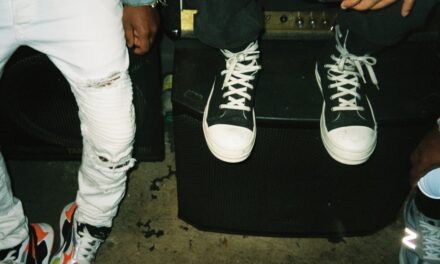Graphite and mechanical pencils have long been staples in the world of writing and drawing, each offering unique advantages that cater to different preferences and needs. Graphite pencils, with their traditional wooden casing and varying degrees of hardness, have been used for centuries, providing artists and writers with a tactile experience that many find irreplaceable. The core of these pencils is made from a mixture of graphite and clay, which allows for a range of shading and line quality depending on the pencil’s grade.
This versatility makes graphite pencils a favourite among artists, students, and professionals alike. On the other hand, mechanical pencils represent a modern evolution in writing instruments. With their sleek design and refillable lead, they offer a level of convenience that traditional graphite pencils cannot match.
Mechanical pencils come in various lead sizes, allowing for precision in both writing and drawing. The ability to maintain a consistent line width without the need for sharpening is particularly appealing to those who require accuracy in their work. As we delve deeper into the pros and cons of each type, it becomes clear that both graphite and mechanical pencils have their own distinct characteristics that can influence a user’s choice.
Summary
- Graphite pencils have been used for centuries and are known for their versatility and ease of use.
- Pros of graphite pencils include their ability to create a wide range of tones, their affordability, and their ease of sharpening.
- Cons of graphite pencils include the need for regular sharpening, the potential for smudging, and the limited range of line widths.
- Mechanical pencils offer a consistent line width, no need for sharpening, and a variety of lead sizes, but they can be more expensive and may break more easily.
- When comparing the writing experience, graphite pencils offer a more traditional and tactile feel, while mechanical pencils provide a more precise and consistent writing experience.
- Graphite pencils are more durable and longer-lasting than mechanical pencils, which may need frequent refills and are more prone to breakage.
- Both graphite and mechanical pencils have an environmental impact, with graphite pencils being more sustainable due to their biodegradability and minimal use of plastic.
- While graphite pencils are generally more affordable, mechanical pencils can be a cost-effective option in the long run due to their refillable nature. Ultimately, the choice of pencil depends on individual preferences and needs.
Pros and Cons of Graphite Pencils
The Versatility of Hardness Grades
One of the primary advantages of graphite pencils is their wide range of hardness grades, which allows artists to achieve varying degrees of darkness and lightness in their work. From the softest 8B to the hardest 9H, each pencil offers a unique quality that can enhance shading techniques and create depth in drawings.
The Tactile Experience
Additionally, the tactile feedback of a wooden pencil gliding across paper can be immensely satisfying, fostering a connection between the artist and their medium.
The Drawbacks of Graphite Pencils
However, graphite pencils are not without their drawbacks. One significant disadvantage is the need for regular sharpening, which can interrupt the flow of creativity. The wooden casing can also break or splinter, leading to frustration during use. Furthermore, graphite marks can smudge easily, which may be problematic for artists who require clean lines or for students who need to submit neat assignments. Despite these challenges, many still prefer the traditional feel of graphite pencils, valuing the artistry and craftsmanship that comes with them.
Pros and Cons of Mechanical Pencils
Mechanical pencils offer a host of benefits that appeal to those who prioritise convenience and precision. One of the most significant advantages is the consistent line width they provide; users can write or draw without worrying about the pencil tip becoming dull or needing sharpening. This feature is particularly beneficial for technical drawing or detailed work where accuracy is paramount.
Additionally, mechanical pencils often come with ergonomic designs that enhance comfort during extended use, making them an excellent choice for students or professionals who spend long hours writing. Nevertheless, mechanical pencils also have their limitations. The lead used in these pencils can be prone to breaking, especially if too much pressure is applied while writing or drawing.
This can lead to frustration as users find themselves frequently replacing broken leads. Moreover, some artists argue that mechanical pencils lack the warmth and character of traditional graphite pencils, feeling more sterile in comparison. The choice between these two types often comes down to personal preference, as each has its own set of strengths and weaknesses.
Comparison of Writing Experience
When it comes to the writing experience, graphite and mechanical pencils offer distinctly different sensations that can significantly affect user preference. Graphite pencils provide a tactile experience that many find comforting; the slight resistance of the wood against paper creates a satisfying friction that can enhance the act of writing or drawing. The ability to control pressure and angle allows for a dynamic range of expression, making each stroke feel personal and unique.
Artists often appreciate this connection to their medium, as it fosters a sense of creativity that can be difficult to replicate with other tools. In contrast, mechanical pencils deliver a more uniform experience. The consistent lead size ensures that every line remains sharp and precise, which is particularly advantageous for technical work or detailed illustrations.
However, this uniformity can sometimes feel less engaging than the organic flow of graphite pencils. Some users may find that the lack of variation in line quality limits their creative expression. Ultimately, the choice between these two types hinges on individual preferences; some may favour the traditional feel of graphite while others appreciate the precision offered by mechanical pencils.
Durability is an essential factor when considering writing instruments, particularly for those who rely on them daily.
While they may not last as long as mechanical pencils in terms of overall lifespan—due to the need for sharpening—they do not require refills or replacements as mechanical pencils do.
A well-maintained graphite pencil can provide a satisfying writing experience until it is reduced to a stub. Mechanical pencils, on the other hand, are designed for longevity with their refillable lead systems and robust construction. Many models are made from durable materials such as plastic or metal, which can withstand daily wear and tear better than wooden pencils.
However, users must consider the cost of replacement leads and erasers over time, which can add up if used frequently. In terms of durability, mechanical pencils often have the edge due to their design; yet, the experience of using a traditional graphite pencil remains unmatched for many artists who appreciate its simplicity.
Environmental Impact of Graphite and Mechanical Pencils
The environmental impact of writing instruments is an increasingly important consideration for consumers today. Graphite pencils are generally more eco-friendly due to their natural materials; they are made from wood sourced from sustainable forests and contain non-toxic graphite. When disposed of properly, they have a minimal impact on the environment compared to plastic-based products.
Additionally, many manufacturers are now producing eco-conscious versions of graphite pencils that utilise recycled materials or sustainable practices in their production. Mechanical pencils present a more complex environmental challenge. While they are often made from durable materials that can last longer than traditional pencils, they typically contain plastic components that contribute to waste when discarded.
The production process for these materials can also have a larger carbon footprint compared to natural wood sources. However, some brands are now offering mechanical pencils made from recycled materials or designed for easy disassembly to promote recycling efforts. Ultimately, consumers must weigh these factors when choosing between graphite and mechanical options.
Cost Comparison
Cost is another critical factor when deciding between graphite and mechanical pencils. Graphite pencils are generally more affordable upfront; a set of various grades can be purchased at a relatively low price point, making them accessible for students and casual users alike. However, frequent sharpening may lead to quicker consumption of these pencils, necessitating more frequent replacements over time.
Mechanical pencils tend to have a higher initial cost due to their more complex design and materials used in construction. However, they can be more economical in the long run since users only need to replace leads rather than entire pencils. The cost-effectiveness will depend on individual usage patterns; those who write or draw extensively may find that investing in a quality mechanical pencil pays off over time due to its longevity and refillable nature.
Ultimately, both options offer varying price points that cater to different budgets and preferences.
Which Pencil is Right for You?
In conclusion, choosing between graphite and mechanical pencils ultimately depends on personal preference and specific needs. Graphite pencils offer a traditional experience with a tactile connection that many artists cherish; their versatility in shading and line quality makes them ideal for creative expression. However, they require regular sharpening and may not be as durable as their mechanical counterparts.
Mechanical pencils provide precision and convenience with their consistent line width and ergonomic designs; they are perfect for those who prioritise accuracy in their work. Yet, they may lack the warmth associated with traditional writing instruments and can be prone to lead breakage.
Whether you lean towards the classic charm of graphite or the modern efficiency of mechanical options, both types have much to offer in terms of creativity and functionality. Ultimately, it may even be worthwhile to keep both types on hand—each serving its purpose depending on the task at hand—allowing you to enjoy the best of both worlds.
When considering the use of graphite vs. mechanical pencils, it is important to also explore different art techniques that can be achieved with each tool. One such technique is the sfumato technique, which involves creating soft transitions between colours or tones to produce a hazy, smoky effect in a painting. To learn more about this fascinating art technique, check out this article on Thinkofart.com.



